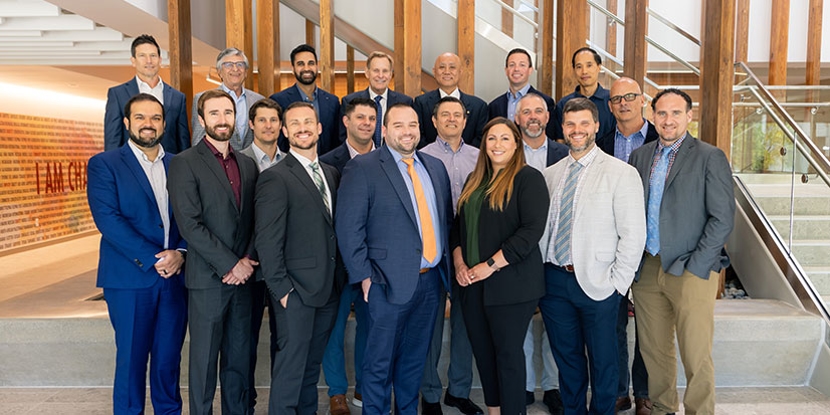How quickly does Orthopedic Technology change? | Dr. Barnett
- Category: Blog
- Posted On:
We know that orthopedic patients and their families benefit greatly from advances in orthopedic technology. In an effort to help our readers understand more about how such advances are made, we requested an interview with Dr. Steven L. Barnett. Dr. Barnett is a board certified orthopedic surgeon with a practice specializing in joint replacement and adult reconstructive surgery for arthritic conditions. Dr. Barnett is involved in community and physician education and has presented at numerous conferences nationally on arthritis and new advances in joint replacement technique. He has published multiple articles in the orthopedic literature.
HOI: Thank you for your willingness to speak with us Dr. Barnett. Our readers know there have been many exciting changes in orthopedic technology. In your view, what are the most beneficial changes in the last ten years?
Dr. Barnett: We have seen significant changes with both implant technology and instrumentation in the last ten years. With respect to hip replacement surgery, there have been advances in biologic fixation as well as bearing surfaces. It is now rare that an Orthopedic Surgeon needs to use cement fixation when performing hip replacement surgery. With the development of porous titanium surfaces and trabecular metal, we can now achieve rapid, robust biologic fixation of hip implants to host bone which potentially will last throughout the patient's life. There have also been advances in the durability of the actual articulation (ball and socket) of the prosthetic hip joint. Historically this has been the weak link in total hip replacement surgery and patient's prosthetic hips would wear out after 10-15 years because the socket liner would become too thin. Now with more durable bearing surfaces, total hips may last 20-30 years which allows us as orthopedic surgeons to offer this procedure to younger patients.
On the knee side we have seen the development of computer navigation as well as customized patient-specific instruments. We know from outcomes studies that one of the most important steps in knee replacement surgery is achieving neutral alignment of the leg after the knee replacement is completed and the patient's preoperative deformity corrected. Historically surgeons have relied on various jigs and alignment rods to complete this process. We now have the ability to create a computer model of the patient's knee at surgery and use 3-dimensional navigation techniques to achieve neutral alignment with more precision. More recently technology has been developed to create custom cutting blocks for specific patients based on preoperative MRI exams which take into account knee deformity and allow the surgeon to make the appropriate cuts at surgery in a minimally invasive technique.
HOI: Does orthopedic technology change quickly, or is there a lengthy process of experimental trials, testing and approvals?
Dr. Barnett: The degree of changes we see in orthopedic technology can be variable, but overall this is a gradual process which comes about through research and development as well as trial and error. Any new technology brought forth by manufacturing companies must go through extensive testing both in the laboratory and then eventually in human subjects before it can be released for widespread use in to the general public. This testing ensures that the devices we implant are safe. Often times, companies can piggy-back their advances on to previously investigated devices as long as they are similar. For new technology it takes between 7-10 years for the process to be completed and cleared by regulatory agencies in this country. This is not an inexpensive process for companies to embark on and is one reason for the high cost of these implants.
HOI: Are orthopedic patients ever concerned about their surgeon utilizing new technology? And how does a surgeon learn to use and become proficient with new technology?
Dr. Barnett: Because of the increased access to electronic media and the internet, many patients are very well informed about advances in technology which may impact their treatment. Additionally, many of the implant manufacturing companies are now marketing directly to the consumer (i.e. patient) with respect to hip and knee replacement devices. This was unheard of even five years ago. Although this can be both good and bad, patients definitely are more informed these days prior to discussing potential surgery with their orthopedic surgeon.
Sophisticated new techniques with computer navigation, minimally invasive techniques, and robotic surgery have placed the burden for continuing education on the surgeon himself. These days it is probably not realistic that a surgeon can read about a new technique in a journal one day and be performing that procedure on an actual patient the next. Most companies that are promoting new surgical techniques and technologies will provide surgeons with the ability to visit a course where they can review the literature supporting the procedure as well as practice on human cadavers. Many hospitals will also require surgeons to be certified on new orthopedic techniques through a licensed course before they can perform it at their facility.
_____________________________
Dr. Steven Barnett is a board certified orthopedic surgeon with a practice specializing in joint replacement and adult reconstructive surgery for arthritic conditions. He is a general partner of the Orthopaedic Specialty Institute in Orange County, and a member of the American Academy of Orthopaedic Surgeons, the California Orthopaedic Association, and the Western Orthopaedic Association.


